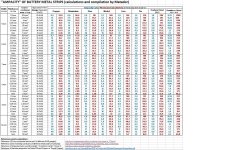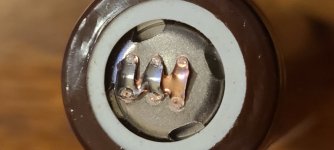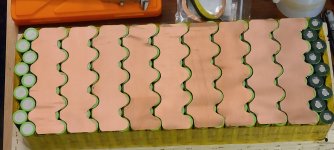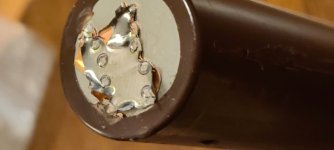KiefRichards
100 mW
- Joined
- Jan 14, 2022
- Messages
- 42
I’m about to weld up my battery pack and was hoping for some input before its too late to turn back.
0.15 copper series buses and .15 nickel parallel connections. Both buses are 10mm wide.
Its an 9p20s configuration to be used with an EM150 controller and qs138 motor.
My goal is to have a battery capable of 300A burst for a few seconds.
Any criticism would be welcomed. I’d like to do this right.
The batteries are sorted into parallel groups with matching IRs. Lowest IR cells of each P group are in the middle of the parallel strings.
Thanks!
0.15 copper series buses and .15 nickel parallel connections. Both buses are 10mm wide.
Its an 9p20s configuration to be used with an EM150 controller and qs138 motor.
My goal is to have a battery capable of 300A burst for a few seconds.
Any criticism would be welcomed. I’d like to do this right.
The batteries are sorted into parallel groups with matching IRs. Lowest IR cells of each P group are in the middle of the parallel strings.
Thanks!





